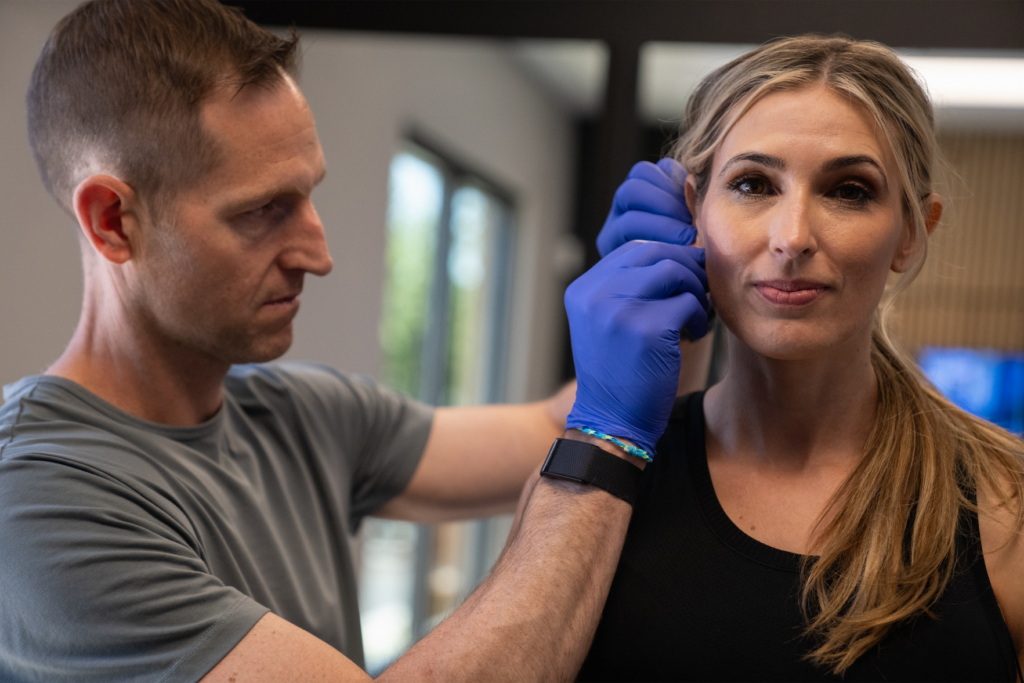Heart is Where All Five Elements Converge
At Clay, we take a whole-body approach to health because your body is a whole system—interconnected, dynamic, and responsive. Each of our Five Elements of Health—Fuel, Brain, Body, Blood, and Heart—build upon one another to create a high-performance engine. At the center of that engine is your metabolism, and your heart plays a central role in dictating how well your metabolism performs.
People tend to think of the heart in isolation: blood pressure, cholesterol, family history. And while those metrics matter, they’re often downstream of more foundational issues like metabolic dysfunction, mitochondrial inefficiency, and energy imbalance.
At Clay, we view the heart not as a standalone organ, but as the metabolic mirror—a powerful feedback system for how you’re living, moving, fueling, and recovering. If you optimize the heart, you’re optimizing far more than blood flow. You’re addressing energy, inflammation, and longevity itself.
Heart Health Begins with Metabolism
Every cell in your body contains mitochondria—the microscopic power plants that convert nutrients into usable energy. Your heart is packed with mitochondria because it never gets a break. It beats roughly 100,000 times a day, 365 days a year.
Your metabolism is essentially the total performance of these engines across your body. When it’s humming, mitochondria efficiently convert glucose and fat into ATP. But when it’s dysfunctional—due to insulin resistance, poor movement, low oxygenation, or chronic stress—your cells accumulate fuel they can’t use. That excess shows up in the bloodstream as inflammation, elevated insulin, and plaque formation.
This inflammation is not just a side effect—it’s a warning sign. Elevated insulin levels, a common outcome of insulin resistance, lead to chronic inflammation. This sets the stage for arterial plaque build-up, decreased vascular elasticity, and the gradual breakdown of the heart’s ability to respond to stress and exertion.
In clinic, I often tell patients: “If we’re seeing plaque on your arteries, the problem didn’t start in your arteries. It started in your cells.” That’s why we test for fasting insulin levels and conduct thorough metabolic assessments at Clay. It’s not enough to wait for symptoms—you need to see the storm coming.
Learn more: Dr. Ben Bikman on insulin and metabolic health
The Heart Is a Muscle—And It Needs Training
A strong heart pumps more blood with fewer beats. That’s efficiency. That’s health.
We leverage VO2Max and Lactate Threshold Testing via Oval to identify how your body uses oxygen under exertion and when it transitions from fat-burning to glucose-burning. These tests tell us how efficiently your mitochondria are functioning and whether your heart is keeping up with your metabolic needs.
From there, we build out your Fitness Heuristics: personalized guidelines that prioritize:
- 80/20 Intensity Balance: 80% of your training in low-intensity, high-volume (Zone 2) work to build mitochondrial density.
- 20% in high-intensity training to trigger adaptation and increase cardiac output per beat.
- Minimum Effective Dose: At least 7 hours of weekly movement with clear distribution and intentionality.
I’ve seen clients drop their resting heart rate by 10–15 beats per minute in just a few months following this approach. More importantly, they feel it—energy during the day, sharper cognition, less craving for sugar. These changes are the metric.
Learn more: Peter Attia’s guide to Zone 2 training

Coaching Director Andrew Browning conducts a lactate threshold test at Clay Clinic in Henderson, Nevada—where data meets performance for personalized heart and metabolic health.
Your Heart Doesn’t Lie—It Reports Everything
It reports your sleep, your stress, your fitness, and your food. That’s why it’s so effective to use wearables like WHOOP or Garmin to track heart rate variability, sleep quality, and recovery. At Clay, we’re fairly agnostic about what tool you use to track so long as you are tracking, interpreting the data correctly, and sharing those markers with your Care Team. These devices don’t just show you how fast your heart beats—they show you how well your body responds to life.
Heart health starts with data. At Clay, we use:
- Calcium Scoring: A coronary calcium scan to detect plaque in the arteries before symptoms emerge.
- Resting and Stress EKGs: To monitor electrical activity and detect underlying heart rhythm issues.
- Fasting Insulin & Lipid Panels: As leading indicators of metabolic stress on the heart.
When needed, we work with clinical partners to implement cardiology-driven interventions. But for most people, the prescription starts with fitness
A patient of mine recently came in frustrated by stubborn weight gain and fatigue. Her labs looked “fine” by conventional standards, but her fasting insulin was high and her heart rate variability was consistently low. With data from her wearables and the right lab testing, we uncovered an underlying metabolic imbalance. Four months later, her HRV has doubled, her energy is back, and the fat’s melting off—not because we treated weight, but because we treated the system.
A 42-year-old entrepreneur with a “clean” bill of health came into the clinic identifying subtle fatigue and stress. After a VO2Max and fasting insulin panel, we identified early insulin resistance and a reduced cardiac efficiency that would have gone unnoticed in a more traditional clinical setting. With targeted interventions, we reversed the trajectory within months and helped to avoid unnecessary complications down the line.
Heart, Mitochondria, and Light
Mitochondria respond not just to movement, but also to light. Specifically, red light exposure (natural or therapeutic) has been shown to enhance mitochondrial efficiency and reduce oxidative stress. Red light therapy is a powerful adjunct for those dealing with fatigue, slow recovery, or seeking improved cellular function.
Inflammation, Insulin & the Arterial Wall
Inflammation doesn’t come from nowhere. It’s often a signal of excess fuel—especially excess insulin in the bloodstream. High insulin promotes fat storage, cellular stress, and over time, damage to the endothelial lining of your arteries.
When artery walls are injured, your body deploys plaque as a patch. But this is not a sustainable solution. It’s like using duct tape to fix a crack in your engine. Over time, the system degrades.
We screen all clients for cardiac risk using Calcium Scoring and EKG if indicated. But we also work upstream by improving fuel partitioning through movement, nutrition, and mitochondrial health.
Clay’s Approach to Heart Health: Whole-Body First
Traditional care focuses on downstream markers: cholesterol, hypertension, family history. We don’t ignore those, but we look upstream.
Our approach is:
- Minimum effective dose of fitness: 7 hours/week, 80/20 mix of endurance and intensity
- Data-backed assessments: VO2 Max, Lactate Threshold, Fasting Insulin, Calcium Score
- Targeted clinical interventions: Red light therapy, mitochondrial support, breathwork
- Lifestyle coherence: Fuel, Recovery, Oxygen, Resilience—all inform Heart
This isn’t about “more exercise” for its own sake. It’s about the right stimulus, applied consistently, to build capacity for life.
Heart as Foundation: Connecting Deeper Topics
Heart health is not a stand-alone metric. It’s a manifestation of your metabolic condition, your movement practice, and even your recovery protocols. When inflammation rises due to metabolic imbalance, the arteries take the first hit. Plaque forms in response to damage. That’s not just about diet; it’s about energy balance.
Energy balance means burning what you consume, neither storing too much nor running on fumes. Achieving that balance leads to:
- Lower resting and max heart rates
- Increased lean muscle mass
- Reduced visceral fat
- Diminished sugar cravings
This is how we teach the heart to be strong, quiet, and reliable.
The Clay Difference
Conventional medicine often waits for pathology to appear. We don’t. We test early, act early, and build systems for sustainable improvement. Our focus on minimum effective dose and metabolic feedback loops creates an upward spiral of health. And because we believe in the power of real metrics, we track your fasting insulin, VO2Max, and lactate threshold as standard data points. Not optional add-ons.

